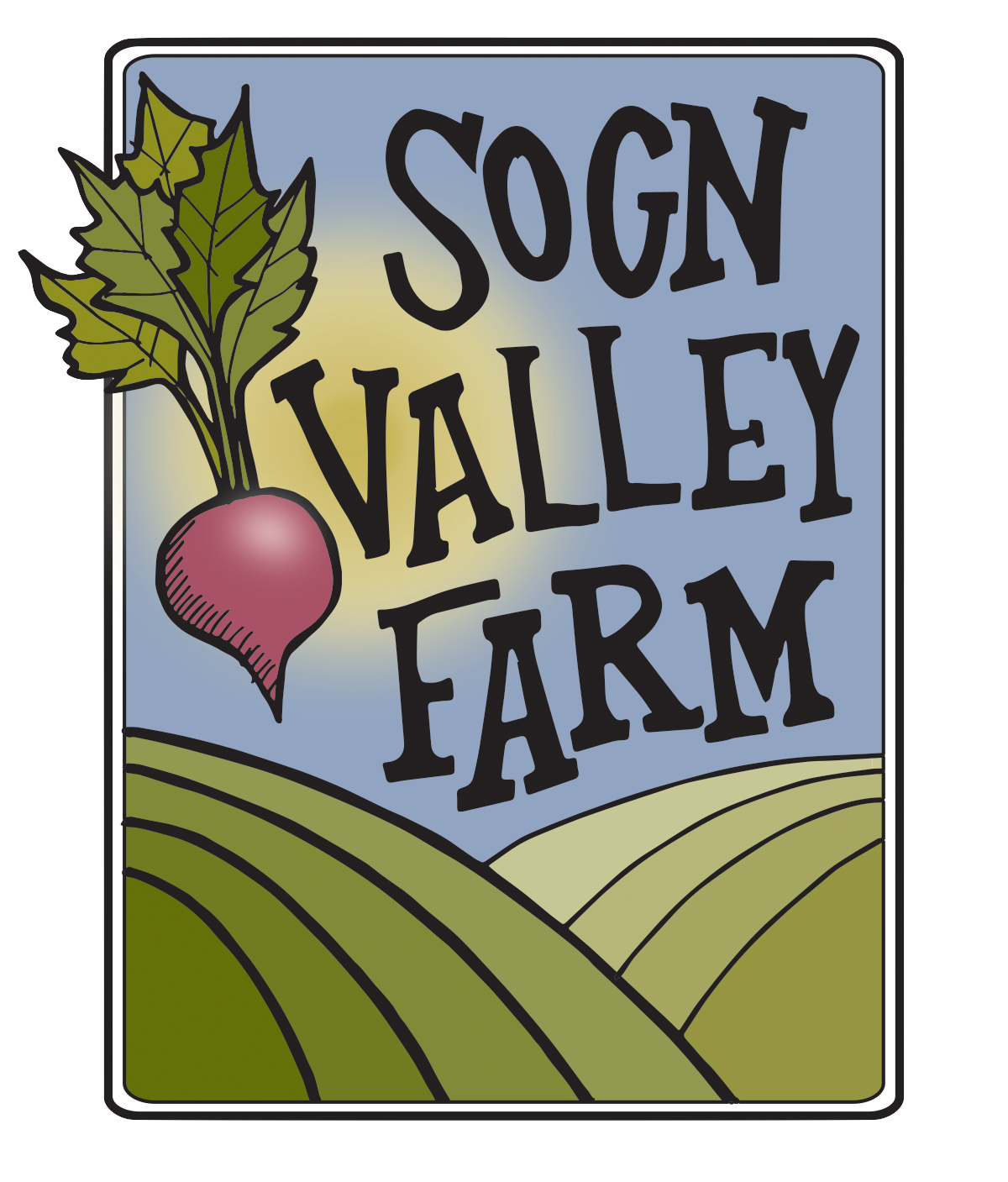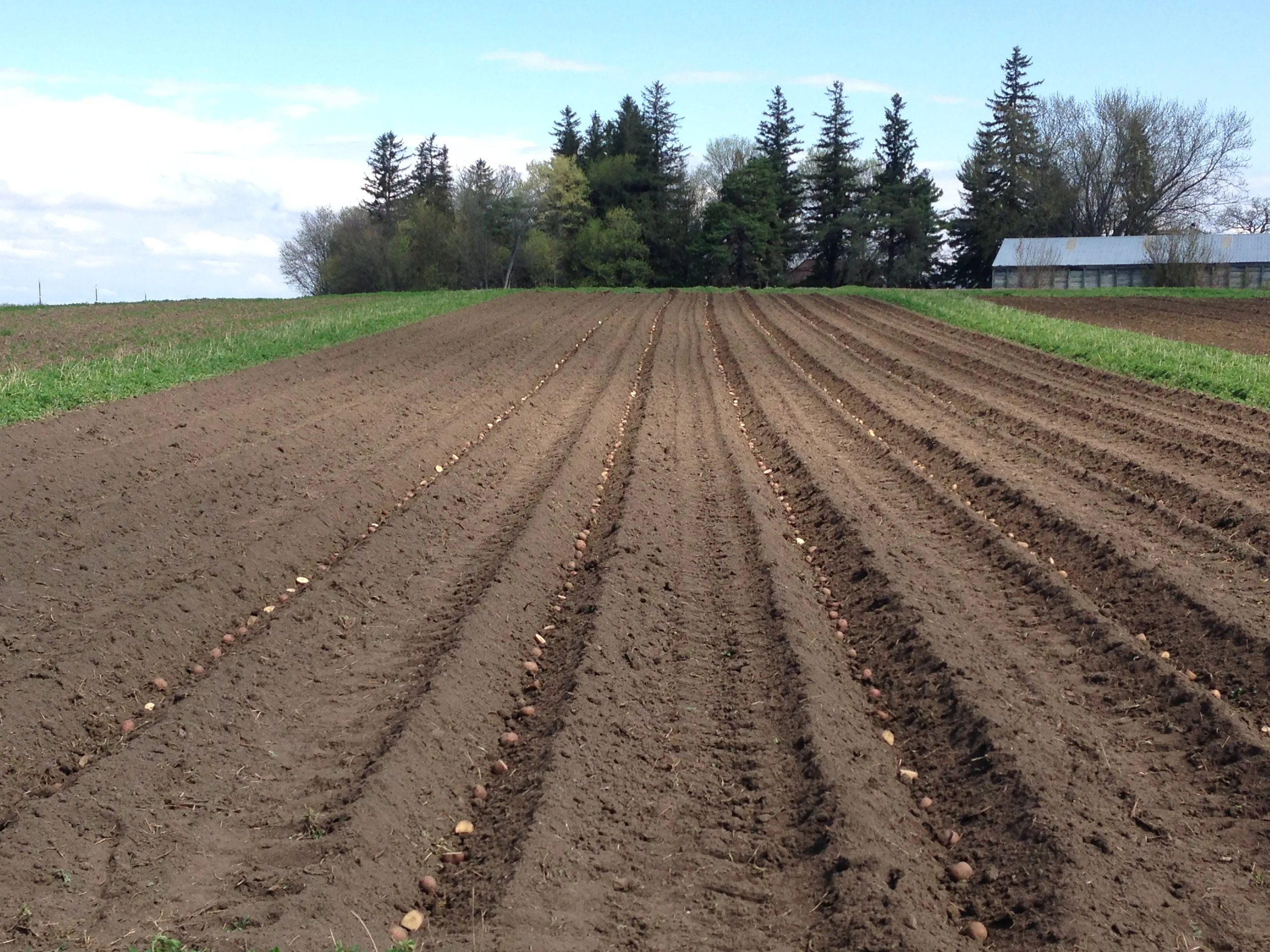It has now been over two months since we fired up the greenhouse to begin growing vegetable transplants and prairie plants, and nearly a month since our first field planting. On the whole, things are looking great. A warm late-March allowed the ground to thaw and soil to dry out by early April, so we took advantage and seeded peas and spinach—two of the hardiest vegetable crops—during the first week of April. But then we didn’t get a drop of rain for another two weeks (hindering germination of said peas and spinach), and it turned cold after that. So we won’t be ending up with those super early harvests we had been hoping for. But that uncommonly long dry stretch in April did allow us to transplant some longer season crops, such as onions and brassicas (broccoli, cabbage, kale, etc.). There were no issues with water for these transplanted crops, as they are provided water during transplanting. We also now have our irrigation system in place that allows us water crops using drip irrigation, a system which slowly and efficiently delivers water through finely perforated water tubes buried in the soil.
We are now a week away from the first planting of warm season crops like tomatoes, peppers, basil, and cucurbits (cucumbers, melons, squash). That marks a turning point in the season when things get a lot busier, because in addition to planting, we are now also into cultivating and hoeing all the weeds that grow on this rich prairie soil. In my experience, soils that grow the best veggies also grow the best weeds.
Alongside all the normal growing season fieldwork thus far, we’ve also been busy with some infrastructure projects. We have been finishing renovations on a building we are converting to our packing shed. This is a very important facility for vegetable production, as it’s where all the vegetables go right after harvest. Our ability to rapidly cool down produce and then store it at the proper temperature ensures the greatest nutrition and shelf life. This is also where we wash our crops and pack boxes for delivery.
The second project was construction of a deer fence around our entire vegetable production field. Our farm is about half cropland and half grassland and forest, and deer really thrive with that combination of habitats. We learned that quickly when some spinach we seeded last fall was quickly grazed down by deer. The particular fence we built is a “3-D” electric fence. It’s essentially two electric fences running parallel to one another, about 3 feet apart. The fences are not tall enough to prevent a deer from jumping over them, but the depth effect of having two parallel fences takes advantage of the deer’s poor depth perception. Since they can’t easily tell how far they’d have to jump to get over, and they are risk averse by nature, they choose not to try jumping over. That’s the theory at least, and we sure hope it works! It’s been two weeks since we transplanted our first round of lettuce, which is candy for deer, and so far no grazing.
The 3D "anti-deer" fence
The last project, which we finished up today, is construction of a 30’ x 96’ high tunnel. A high tunnel is essentially an unheated greenhouse used for season extension and climate modification for crops grown in the soil (as opposed in containers on benches in a greenhouse). Tomatoes grow very well in high tunnels, as they appreciate the added warmth (particularly in the spring and fall), but also because the plastic film that covers the greenhouse excludes rain, keeping the foliage dry most of the time. Since many plant pathogens require moisture on the leaves to infect and cause disease, high tunnels are a great way reduce disease and increase quality of tomatoes. We provide 100% of the water the plants need using drip irrigation.
We're looking forward to having these building projects behind us so we can focus on growing PRODUCE!









